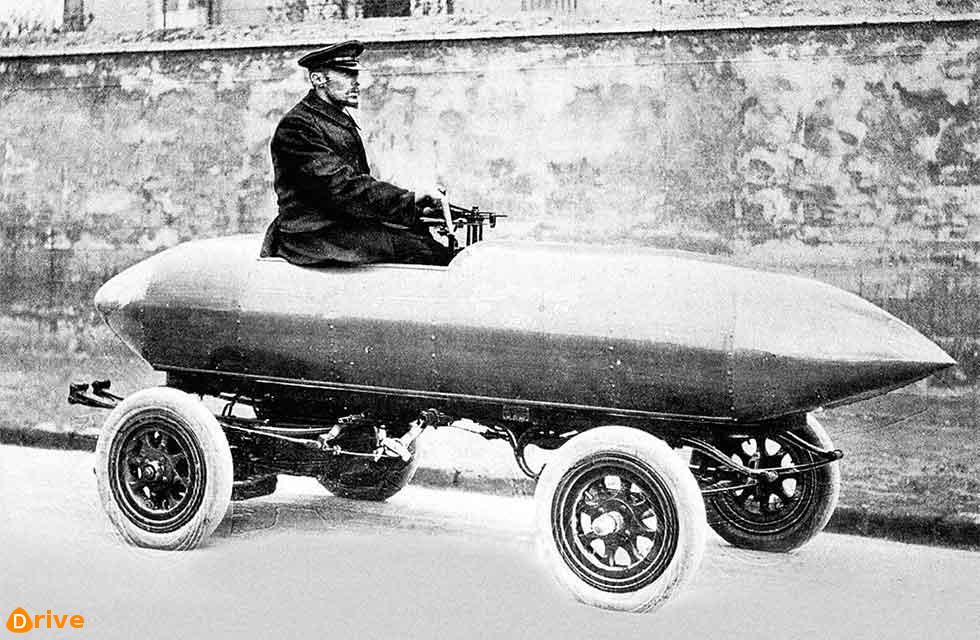On 29 April 1899, Belgian racing driver Camille Jenatzy drove his streamlined car called ‘La Jamais Contente’, which translates as ‘The Never Satisfied’, to a top speed of 100km/h or 62mph – this was the fastest any car had ever travelled; and it was electric. This momentous feat took place near Paris and eclipsed the previous record set about six weeks earlier by Count Gaston de Chasseloup-Laubat at 92.78km/h (57.65mph). The event was overseen by the Automobile Club of France (ACF), who these days run events including the Le Mans 24 Hours amongst others.
History by Paul Beard
Jenatzy, nicknamed La Diablo Rouge (the Red Devil) because of his shock of red hair and beard, was the son of a Belgian manufacturer of rubber tyres, which were unusual in their day. He studied and became an engineer, one who picked up the French (and British) fascination for electric vehicles at that time.

Jenatzy set up a factory to build electric carriages for taxi firms in Paris but had a rival in Jeantaud (not to be confused with the current president of the FIA) and they would vie for the honour of having the fastest vehicles. The culmination in this was La Jamais Contente, which Jenatzy built from a light metal alloy of laminated aluminium, magnesium & tungsten and mounted on a rudimentary cart sprung chassis. Propulsion was by two 50kW motors that drew electricity from a hundred 2V cells.
Apparently, to move forward one mashed the accelerator to the floor and a low voltage jolt would begin the process of transferring power to the motors and then speed increased slowly, the whole contraption making a ‘mooing’ sound whilst in motion.
It’s such a pity that the torpedo shaped body wasn’t mounted lower to the ground over the frame and the driver’s seat lower in the body – imagine how much faster it might have gone! However, Jenatzy later revealed: “The car in which you travel seems to leave the ground and hurl itself forward like a projectile ricocheting along the ground. As for the driver, the muscles of his body and neck become rigid in resisting the pressure of the air, his gaze is steadfastly fixed about two hundred yards ahead and his senses are on the full alert.”
The original car has been hidden away for decades but a replica of it is in the automobile museum at Compiègne (Oise) and was built in 1993-1994 by the students of the Universite de Technologie et du Lycee Technologique de Compiegne, in France.





